Abstract
Of 783 newborn infants with spina bifida cystica and cranium bifidum treated in the 6 years to December 1966, 11% died of ventriculitis. 24% of all deaths were due to this cause. Experience with treatment of ventriculitis with 2 of the antibiotic drugs, gentamicin and cloxacillin, during an 18-month period is presented. CSF levels were estimated during systemic and intraventricular administration of a drug and the clinical response was correlated with these levels. Of the 14 infants treated with gentamicin, the majority of whom had Gram-negative infections, 7 recovered. The 7 who died as a result of ventriculitis were mostly under 4 weeks of age. There was close correlation between the CSF levels attained and results of therapy. It was essential to give the drug intraventricularly to attain any recordable level, and to obtain the best results the systemic and intraventricular dose of the drug had to be adjusted to give CSF levels that exceeded the minimum inhibitory concentration considerably. 2 infants who recovered died later of other causes, but 4 of the 5 survivors had normal developmental attainments. No toxic effects were observed.
The 7 infants treated with cloxacillin, all of whom had Gram-positive infections, survived, 3 with normal development.
The importance of intraventricular administration of drugs and proper control of doses to achieve optimal therapeutic levels is emphasized.
Full text
PDF
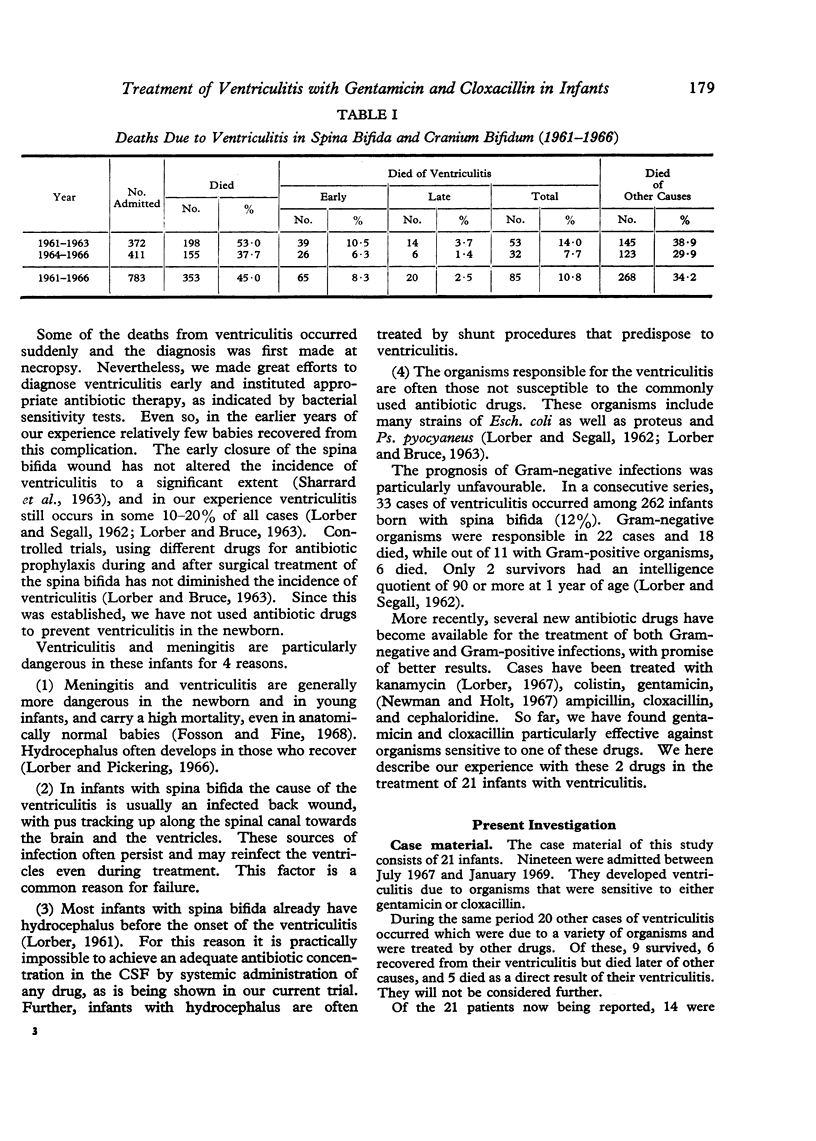
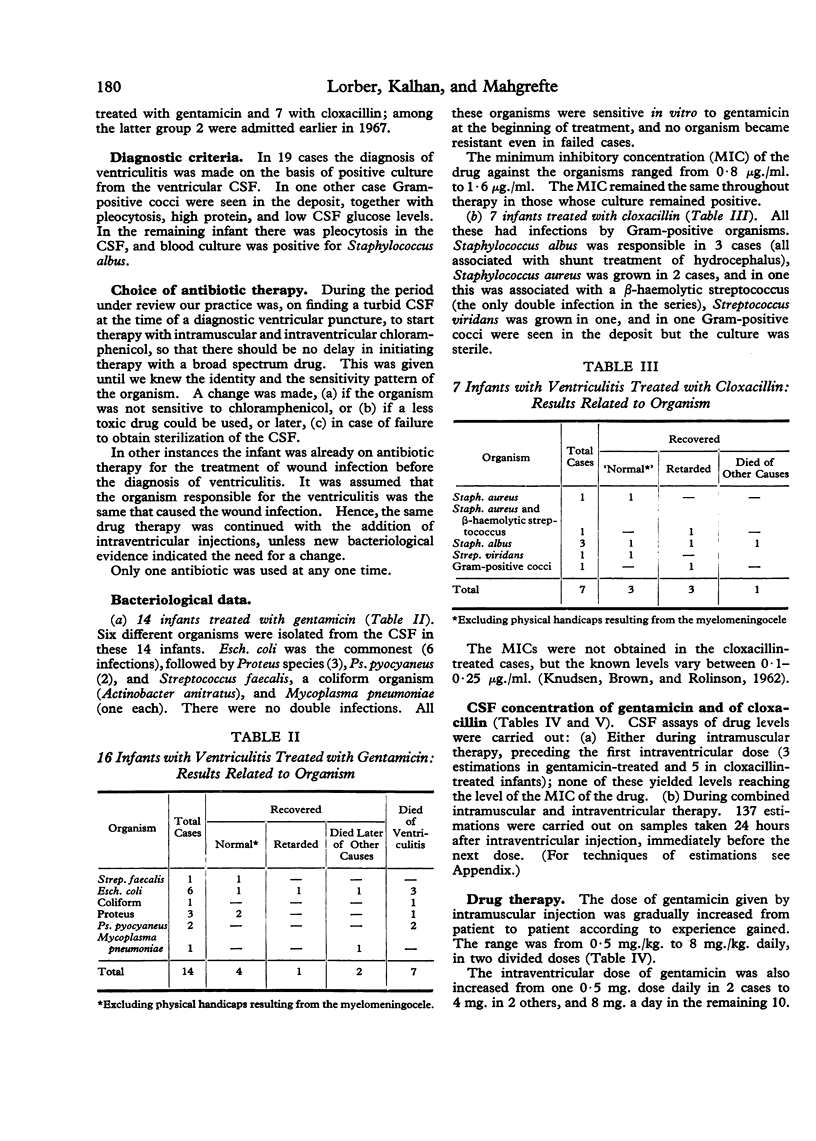
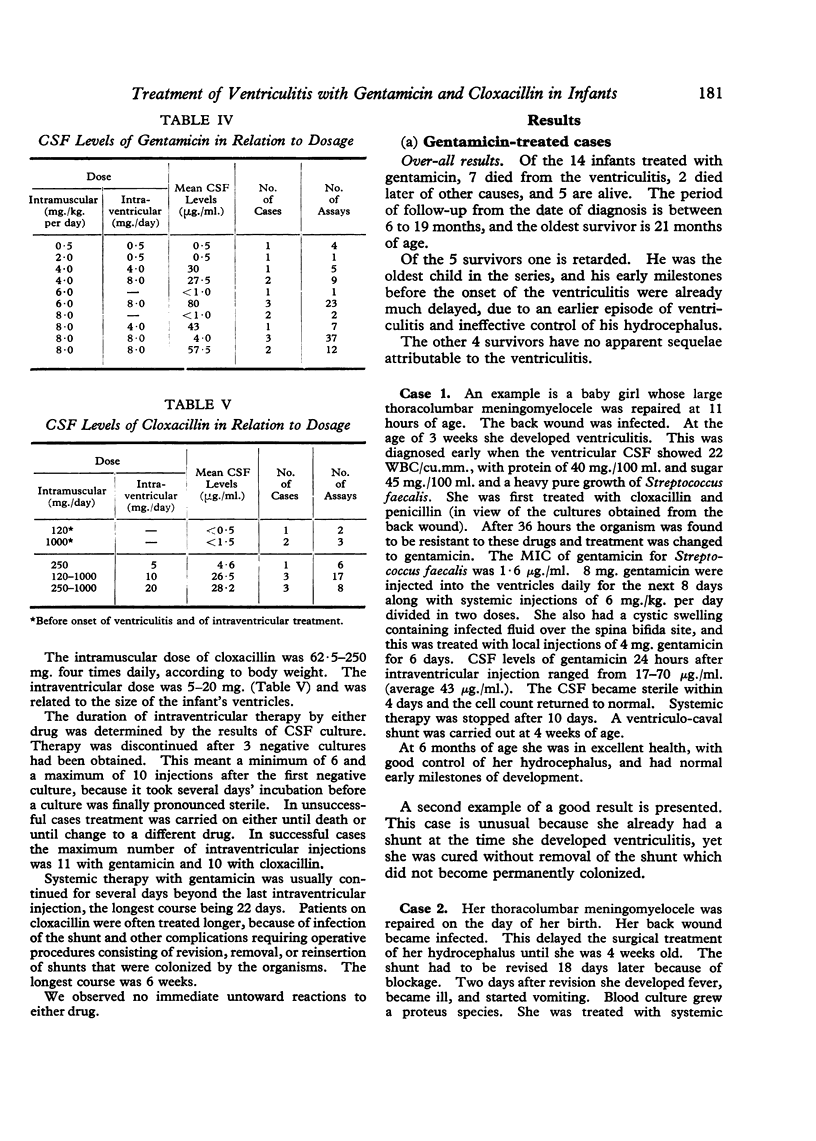

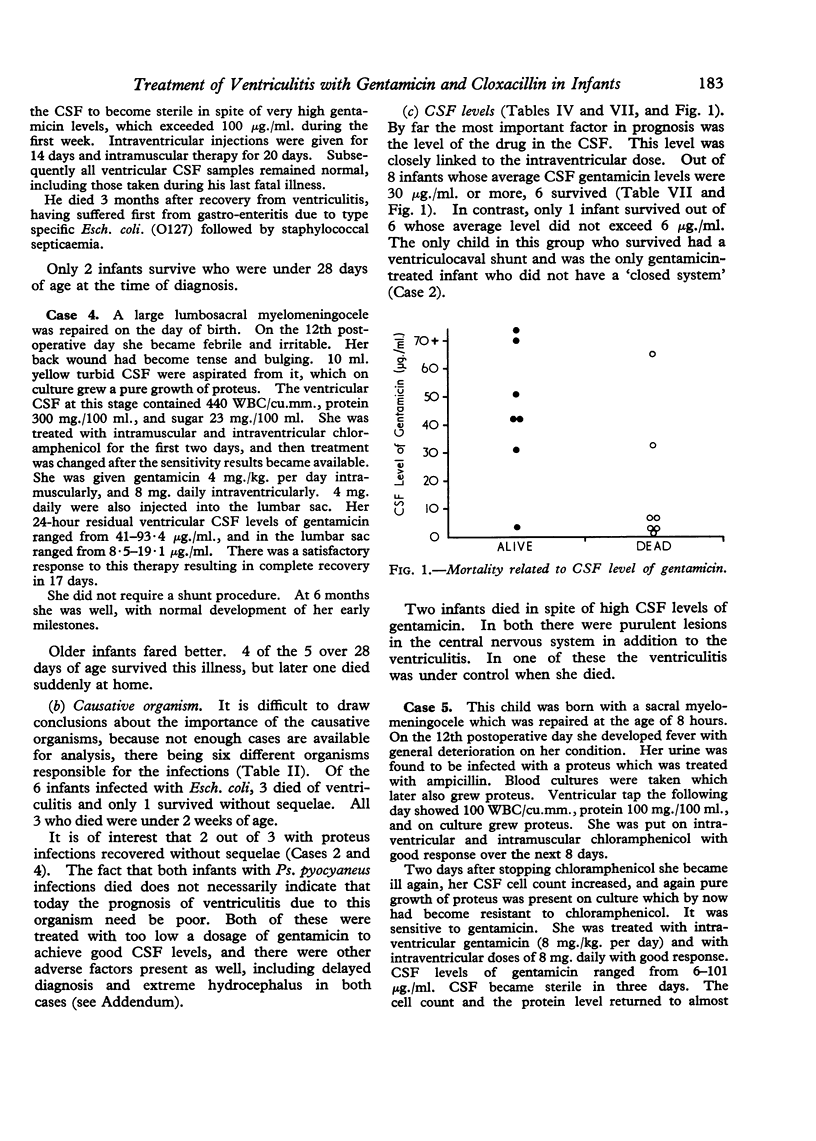
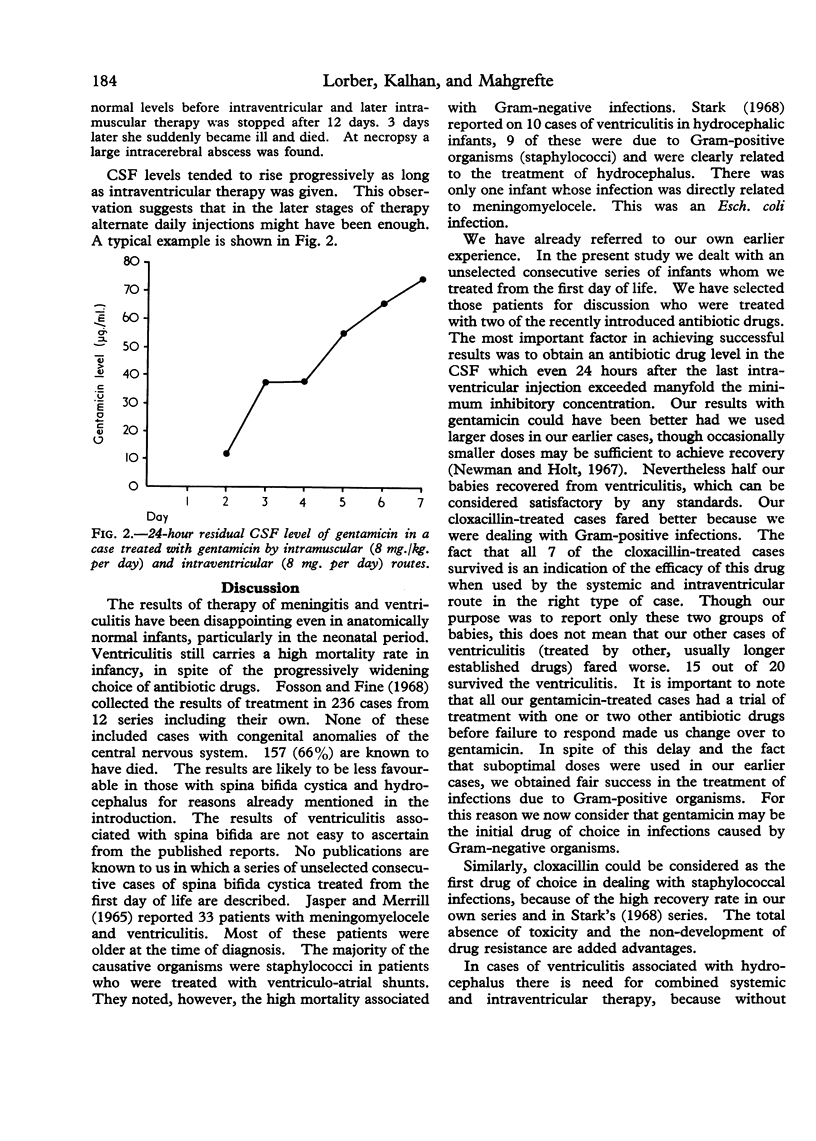

Selected References
These references are in PubMed. This may not be the complete list of references from this article.
- Arthur A. B., Wilson B. D. Urinary infection presenting with jaundice. Br Med J. 1967 Mar 4;1(5539):539–540. doi: 10.1136/bmj.1.5539.539. [DOI] [PMC free article] [PubMed] [Google Scholar]
- Eckstein H. B., Cooper D. G., Howard E. R., Pike J. Cause of death in children with meningomyelocele or hydrocephalus. Arch Dis Child. 1967 Apr;42(222):163–165. doi: 10.1136/adc.42.222.163. [DOI] [PMC free article] [PubMed] [Google Scholar]
- Fosson A. R., Fine R. N. Neonatal meningitis. Presentation and discussion of 21 cases. Clin Pediatr (Phila) 1968 Jul;7(7):404–410. doi: 10.1177/000992286800700712. [DOI] [PubMed] [Google Scholar]
- Jasper P. L., Merrill R. E. Hydrocephalus and myelomeningocele. Central nervous system infection. Am J Dis Child. 1965 Dec;110(6):652–657. doi: 10.1001/archpedi.1965.02090030680011. [DOI] [PubMed] [Google Scholar]
- KNUDSEN E. T., BROWN D. M., ROLINSON G. N. A new orally effective penicllinase-stable penicillin--BRL. 1621. Lancet. 1962 Sep 29;2(7257):632–634. doi: 10.1016/s0140-6736(62)92542-4. [DOI] [PubMed] [Google Scholar]
- LORBER J., SEGALL M. Bacterial meningitis in spina bifida cystica. A review of 37 cases. Arch Dis Child. 1962 Jun;37:300–308. doi: 10.1136/adc.37.193.300. [DOI] [PMC free article] [PubMed] [Google Scholar]
- LORBER J. Systematic ventriculographic studies in infants born with meningomyelocele and encephalocele. The incidence and development of hydrocephalus. Arch Dis Child. 1961 Aug;36:381–389. doi: 10.1136/adc.36.188.381. [DOI] [PMC free article] [PubMed] [Google Scholar]


